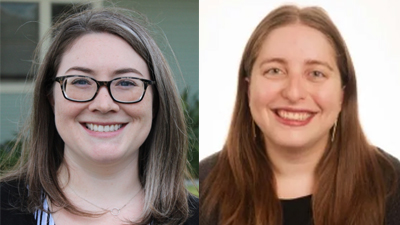Correction placement affects perceived importance and credibility
June 4, 2018 • Jonathan McVerry

New research suggests online news publications can enhance credibility by rearranging their corrections.
With funding from the Arthur W. Page Center, assistant professors Kirstie Hettinga, California Lutheran University, and Alyssa Appelman, Northern Kentucky University, examined readers’ perceptions of corrections in digital news stories. The scholars’ findings suggest that The New York Times, a legacy publication with a high reputation for integrity, could increase its credibility with readers by moving article corrections from the bottom of the story to the top. On the contrary, Yahoo.com, a digital-only publication, would be better off running their corrections at the bottom.
“Journalism is one of the few industries that has an obligation in its ethics codes to announce when it gets things wrong,” Hettinga said. “Most industries are not forthcoming with their errors and I think this research can help address some of the challenges the news media faces today, because when it’s being described as fake, credibility is important.”
The scholars predicted readers would find corrections more important on less-credible, digital-only publications—in this case Yahoo.com. However, Hettinga says, it is possible that readers expect mistakes from outlets with lower credibility making corrections seem less vital. For Yahoo.com, participants said corrections were more important when the publication was responsible for the mistake.
This August, Hettinga and Appelman will present this study, “Errors and Corrections in Digital News Content,” at the Association for Education in Journalism and Mass Communication conference in Washington D.C. The paper received second place in the Mass Communication and Society division’s open competition. The project is a part of the Page Center’s 2017 call for research proposals on digital media.
“We were surprised that our respondents thought it was more important to see the correction at the top of the article in The New York Times, which is the opposite of what the Times does in its online content,” Hettinga said.
Respondents were given a news article that used the incorrect pronoun for an LGBT source and a corresponding correction. The content was the same for each of the 386 participants with differences among three factors: the outlet (New York Times or Yahoo), the correction placement (top or bottom) and error blame (correction blames the source or the news outlet for the mistake). Two control groups received an article—one group received The New York Times and the other Yahoo—with no correction.
“We chose a topic that had a particular meaning for those within or those who support the LGBT community,” Hettinga said. “It’s a divisive issue with clear affiliations between conservative and liberal readers.”
In addition to finding some effects of correction placement, the scholars’ findings also suggested that liberal readers cared more about the LGBT correction than conservative readers, which was expected.
Hettinga and Appelman have been collaborating on this line of research for eight years. They’ve co-authored five journal articles within the realm of news corrections and accuracy. Hettinga said that even though corrections research dates back to the early 1900s, it has not evolved much. Along with Appelman, she hopes their research will help take corrections research into the digital age.

